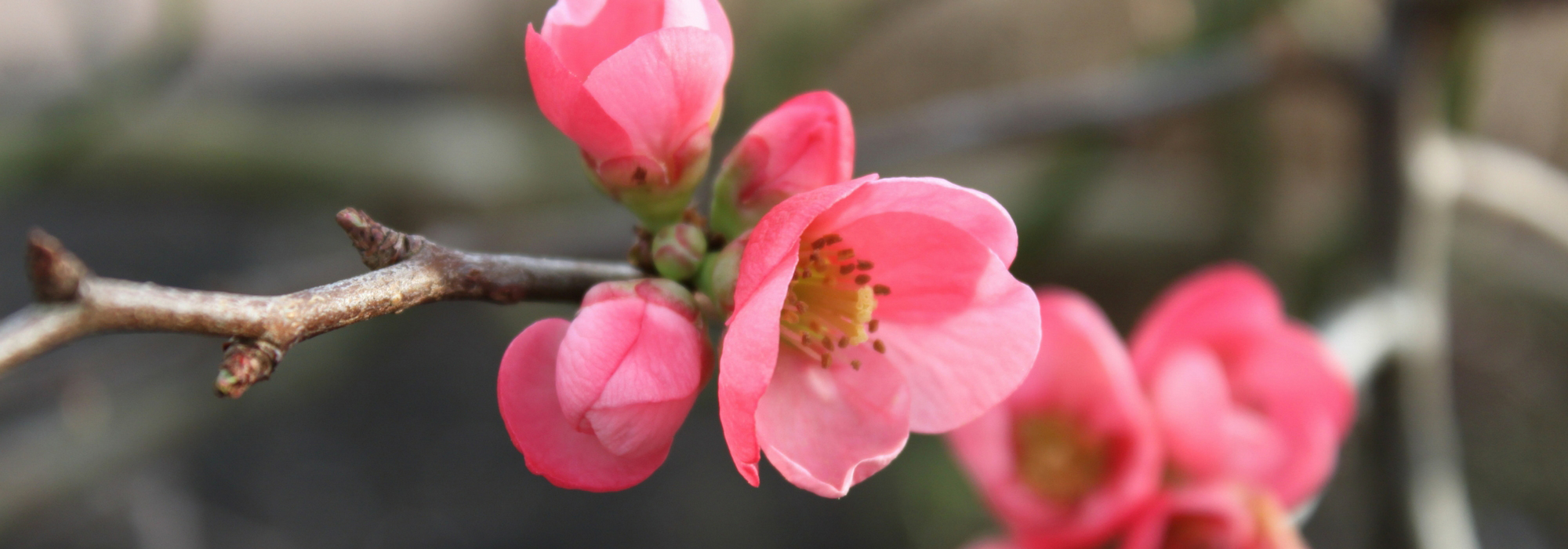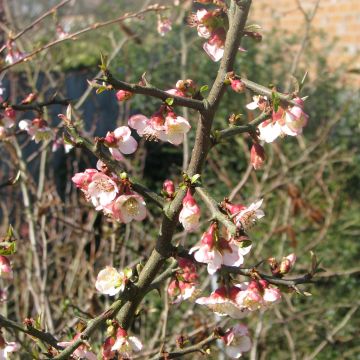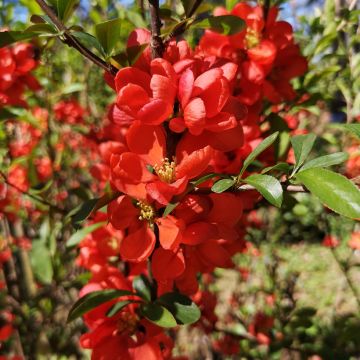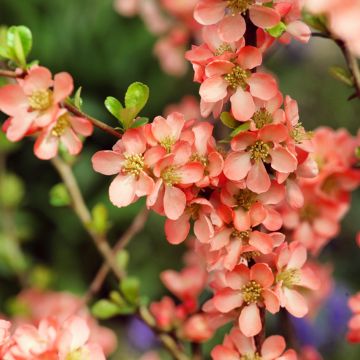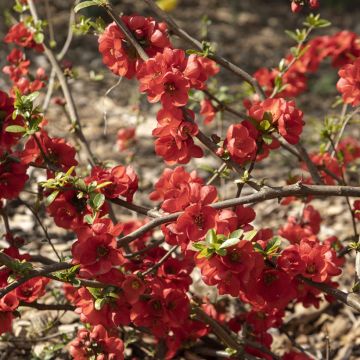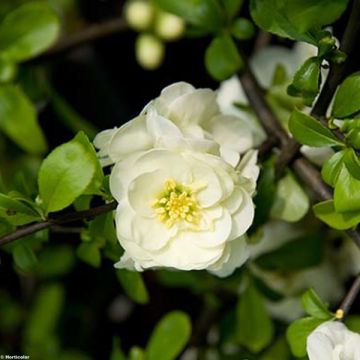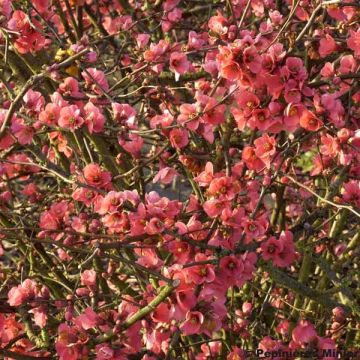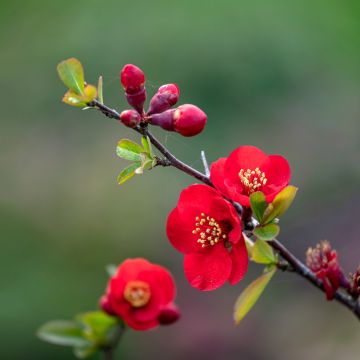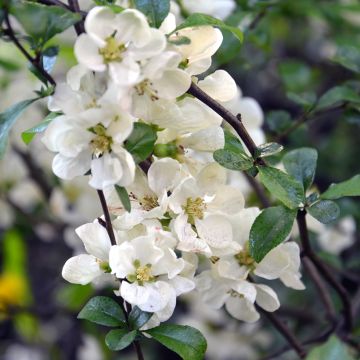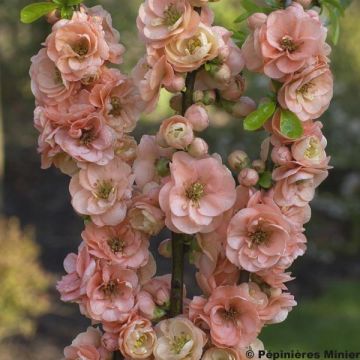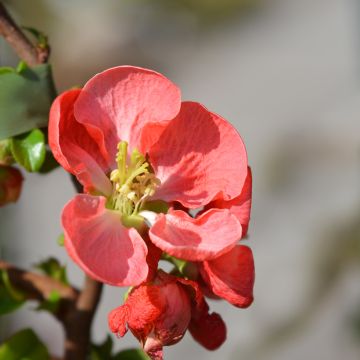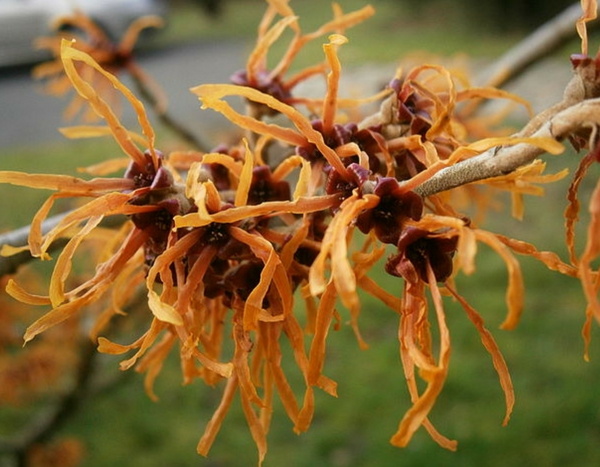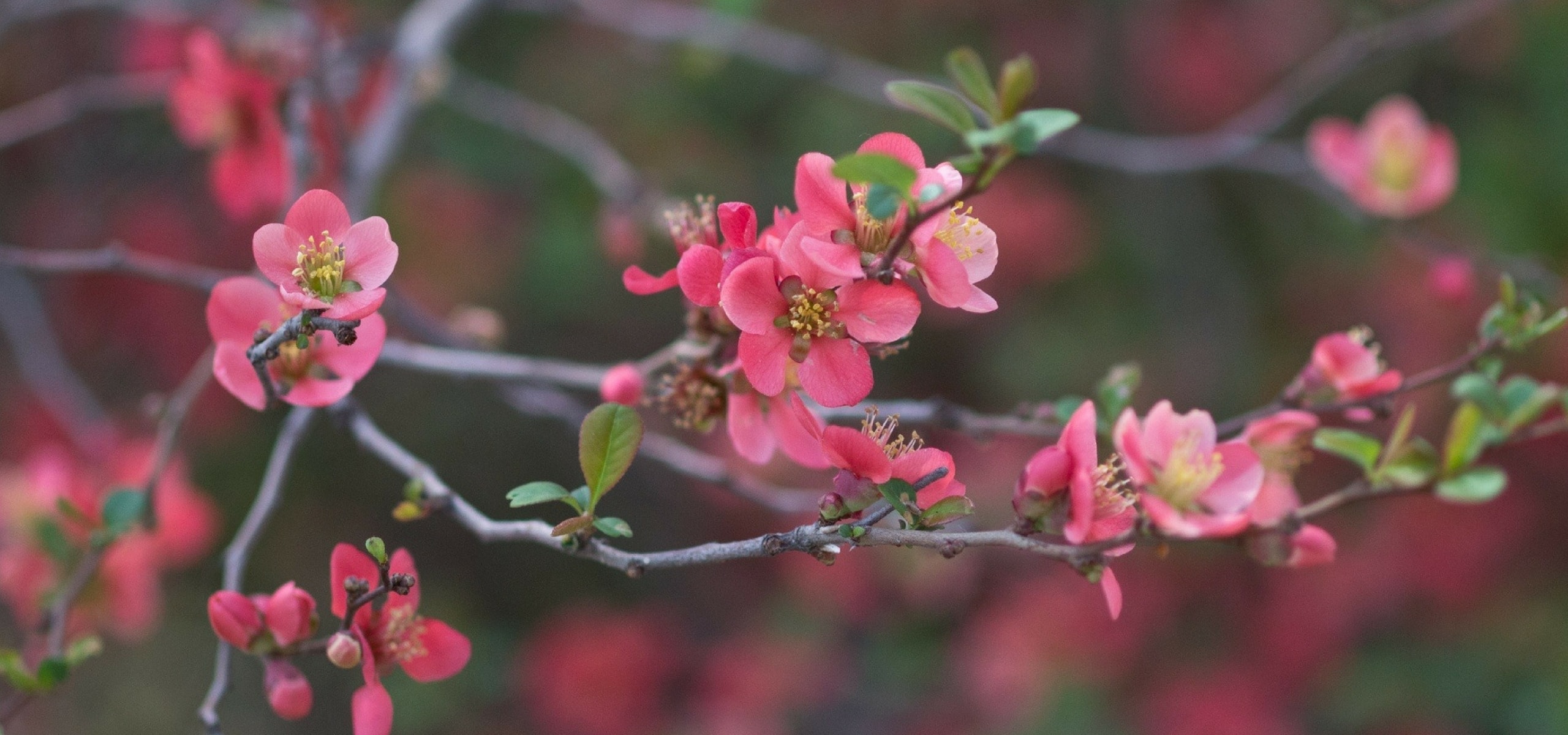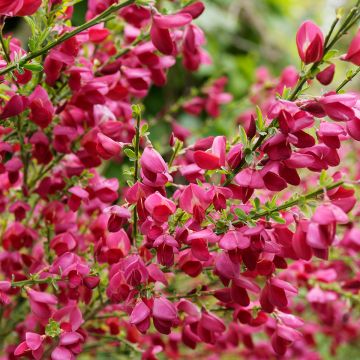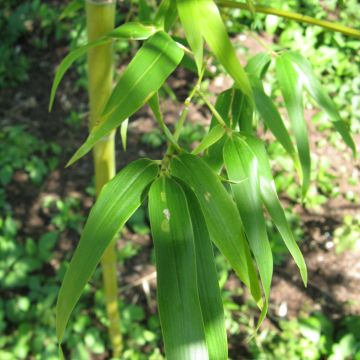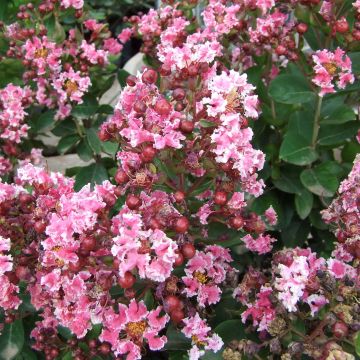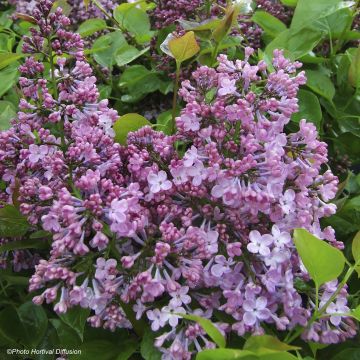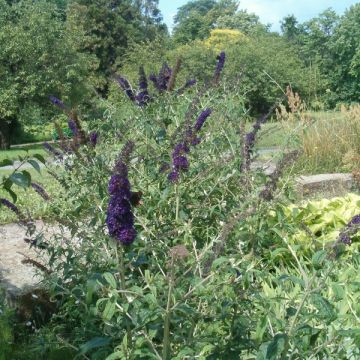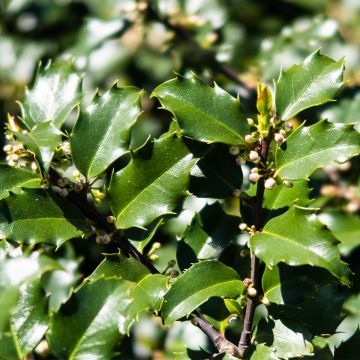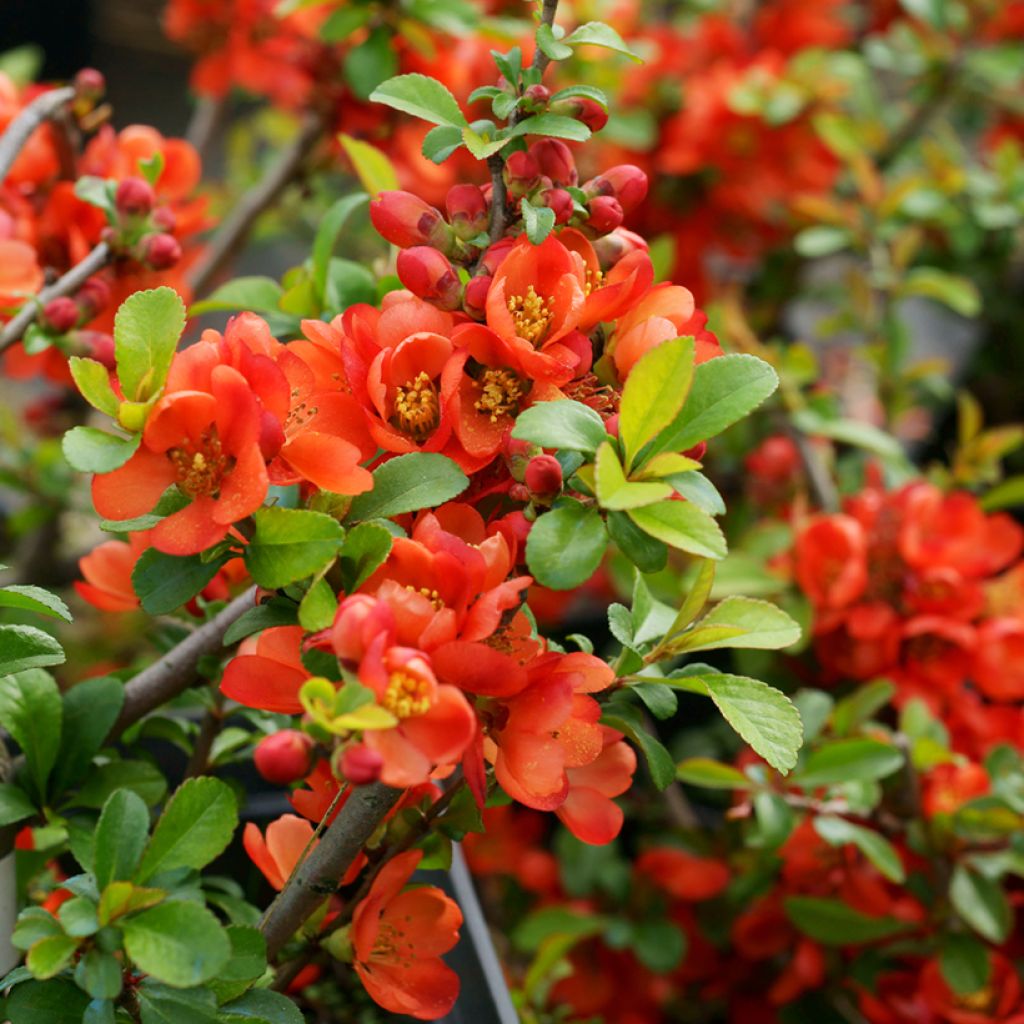

Chaenomeles japonica Sargentii - Flowering Quince
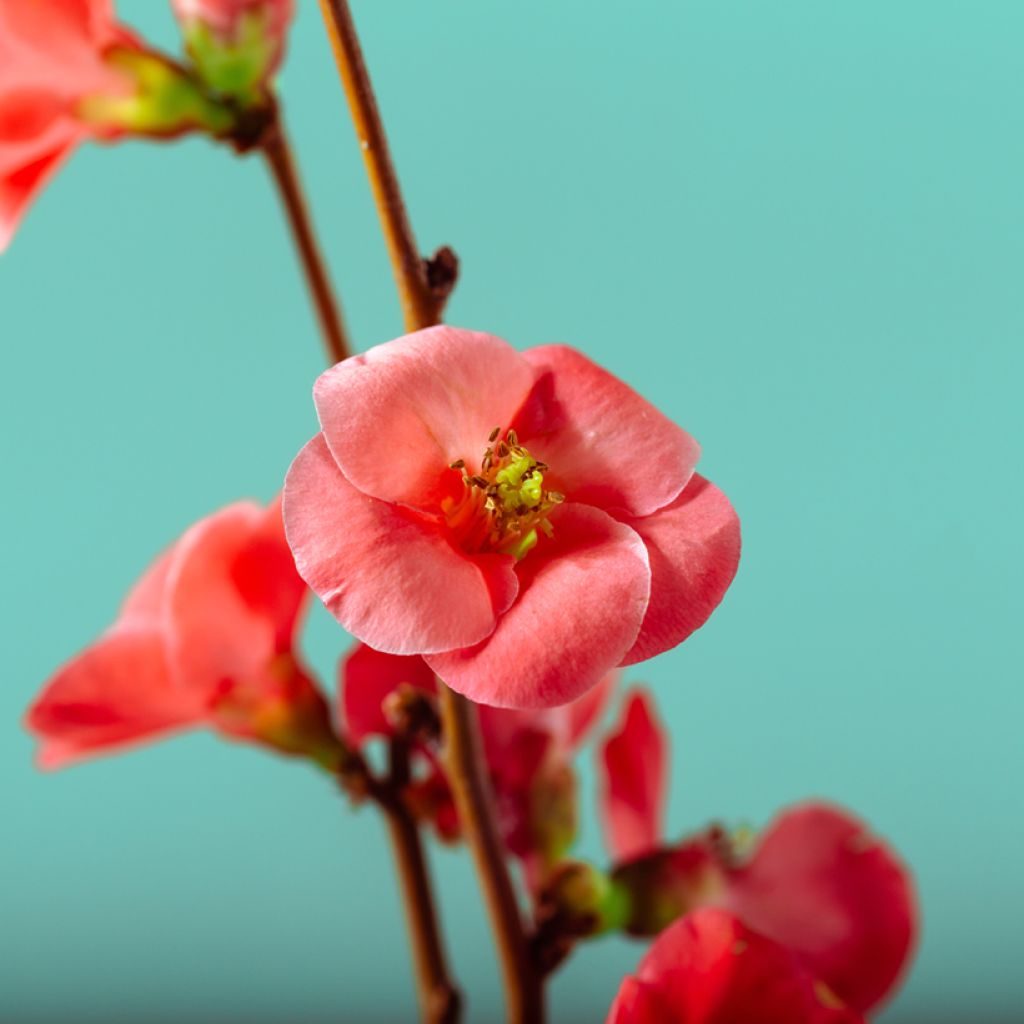

Chaenomeles japonica Sargentii - Flowering Quince
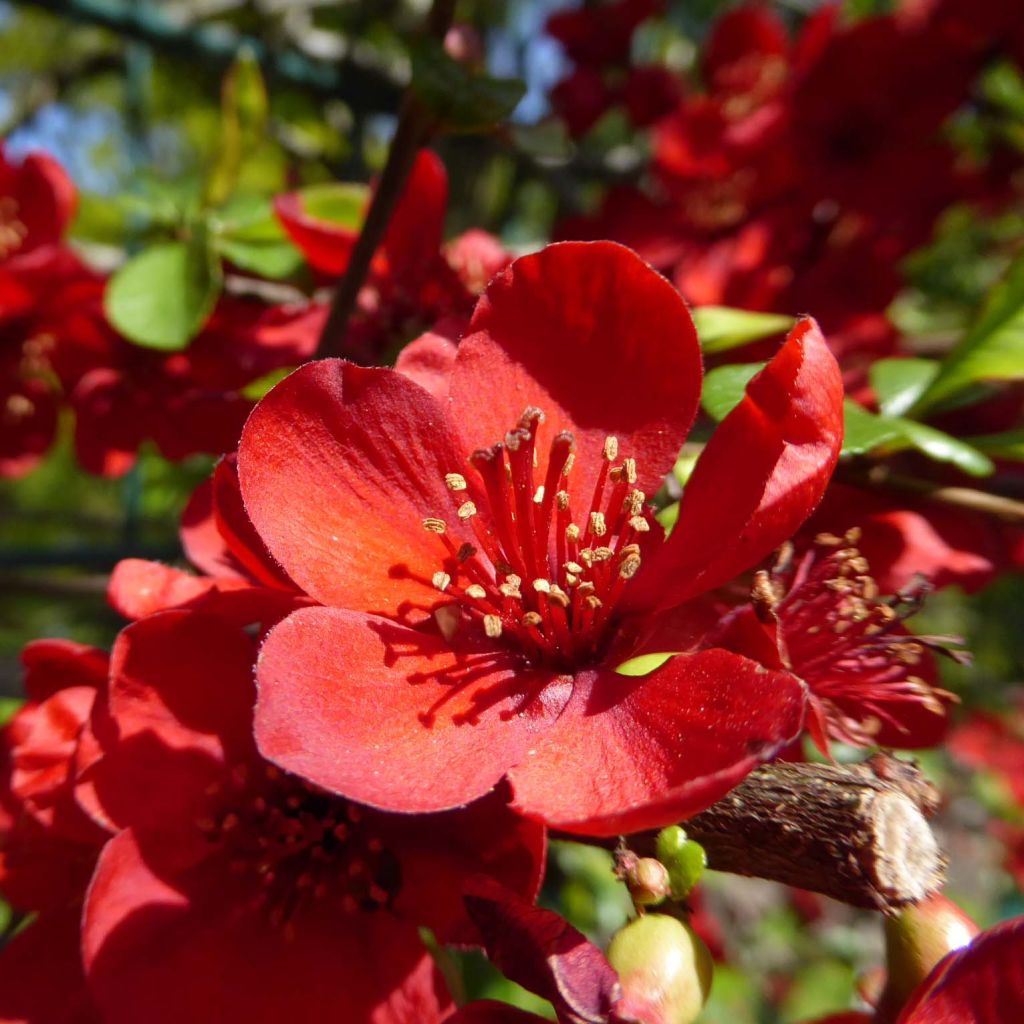

Chaenomeles japonica Sargentii - Flowering Quince
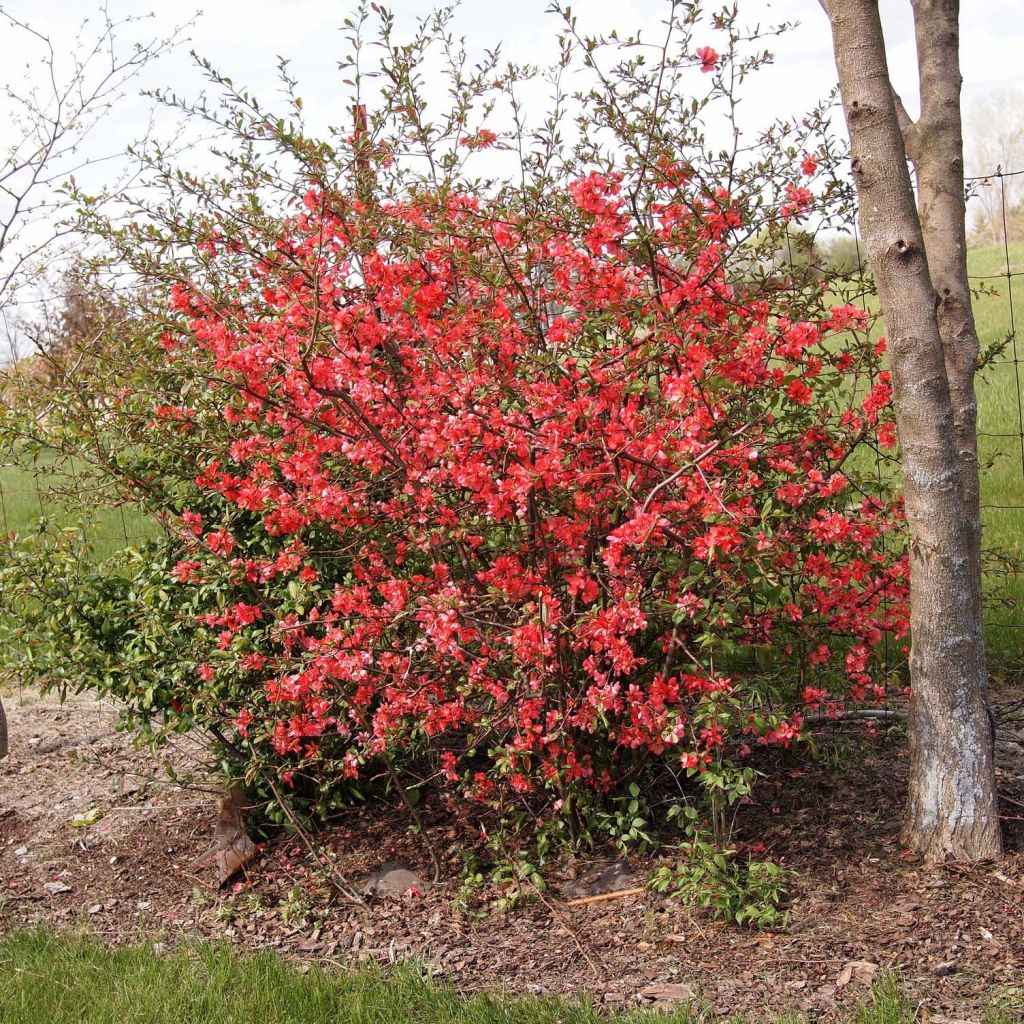

Chaenomeles japonica Sargentii - Flowering Quince
Chaenomeles japonica Sargentii - Flowering Quince
Chaenomeles japonica Sargentii
Japanese quince
The plant delivered took root without any issues. I am looking forward to the flowering in spring.
Sy, 03/12/2024
Special offer!
Receive a €20 voucher for any order over €90 (excluding delivery costs, credit notes, and plastic-free options)!
1- Add your favorite plants to your cart.
2- Once you have reached €90, confirm your order (you can even choose the delivery date!).
3- As soon as your order is shipped, you will receive an email containing your voucher code, valid for 3 months (90 days).
Your voucher is unique and can only be used once, for any order with a minimum value of €20, excluding delivery costs.
Can be combined with other current offers, non-divisible and non-refundable.
Home or relay delivery (depending on size and destination)
Schedule delivery date,
and select date in basket
This plant carries a 24 months recovery warranty
More information
We guarantee the quality of our plants for a full growing cycle, and will replace at our expense any plant that fails to recover under normal climatic and planting conditions.
Does this plant fit my garden?
Set up your Plantfit profile →
Description
Chaenomeles japonica 'Sargentii' is a lovely form of Japanese quince with a compact and spreading habit. A small deciduous bush appreciated for its floribundity and unusual silhouette. In spring, it displays a profusion of incompletely open cup-shaped flowers in a vivacious salmon-orange colour, at the same time as its foliage emerges. Very adaptable to exposure and soil type, it works well as a small flowering hedge, as ground cover, in a wooded garden, in a shrub border, on a terrace, or even in a small garden. This unique and endearing Japanese quince is also appreciated by bonsai enthusiasts.
Chaenomeles japonica is a spiny bush, spreading by suckering from its stump. It is native to Japan and belongs to the Rosaceae family. The 'Sargentii' cultivar distinguishes itself from the species by its more prostrate growth and increased floribundity. This relatively fast-growing bush, somewhat sparse in its youth, thickens with age. It forms a dense bush, 1m (3ft) tall and approximately 1.8m (6ft) wide. Its flowering period lasts from March to April, for about 3 weeks. The nectar-rich flowers, reaching 2 to 3cm (1in) in diameter, are composed of petals in a bright orange that slightly overlap, but never fully open, so that the yellow stamen heart is only visible when the flower withers. The flowers, grouped in 3 or 4 small clusters, are borne on very short or even absent pedicels on the previous year's branches. They give way to small rounded fruits, 3 to 4 cm (1 to 2in) in size, turning yellow in autumn. These aromatic fruits are used in Japanese pharmacopoeia, but are not edible as they are. The deciduous leaves develop almost simultaneously with the flowers; they are ovate to lanceolate, 3 to 6 cm (1 to 2in) long and 1.5 to 3 cm (1in) wide, with a beautiful glossy green on their upper surface.
Japanese quinces, like Forsythias, Abeliophyllum, and Japanese kerrias, are among the first to provide beautiful spring flowers, so eagerly awaited after a long winter. They are comfortable in all climates, as they are not afraid of either heat or cold. They can be grown both as stand-alone specimens and in borders, and of course in a country hedge.
The 'Sargentii' variety can be planted with fragrant bushes like winter honeysuckle (Lonicera fragrantissima) that precedes it, white lilacs that will take over after its flowering, and buddleias to follow. This small bush can also form ground cover, in the company of creeping ceanothus or blue-flowered rosemary which will mutually enhance each other. It can also be trained against a wall, near the house, paired with a winter jasmine, to be enjoyed with every passing. Its still bare but bud-filled branches look beautiful in tall vases.
Chaenomeles japonica Sargentii - Flowering Quince in pictures
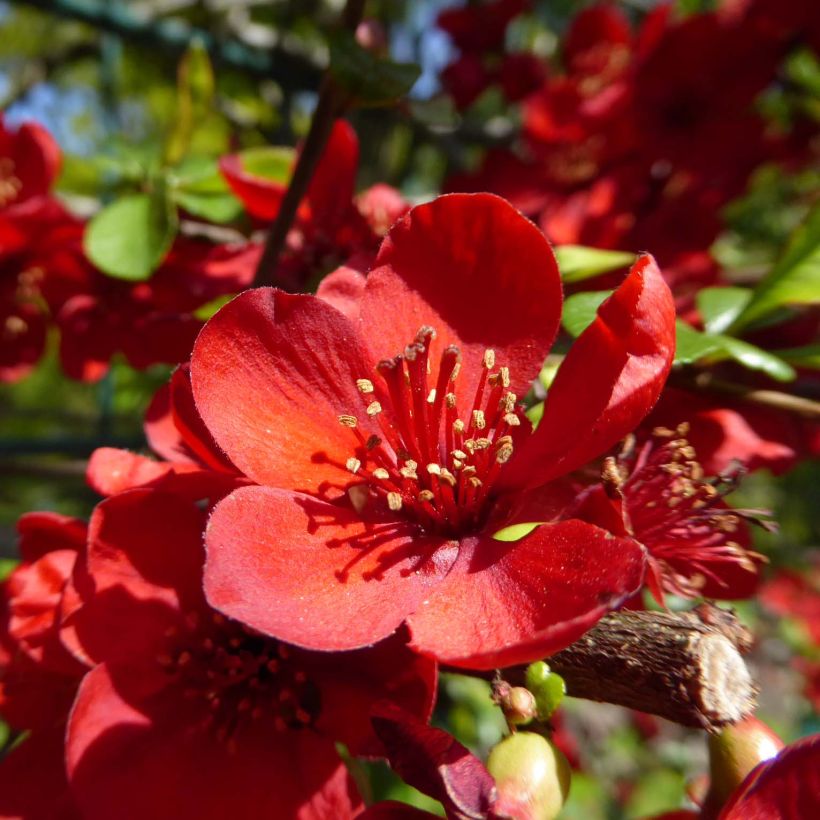

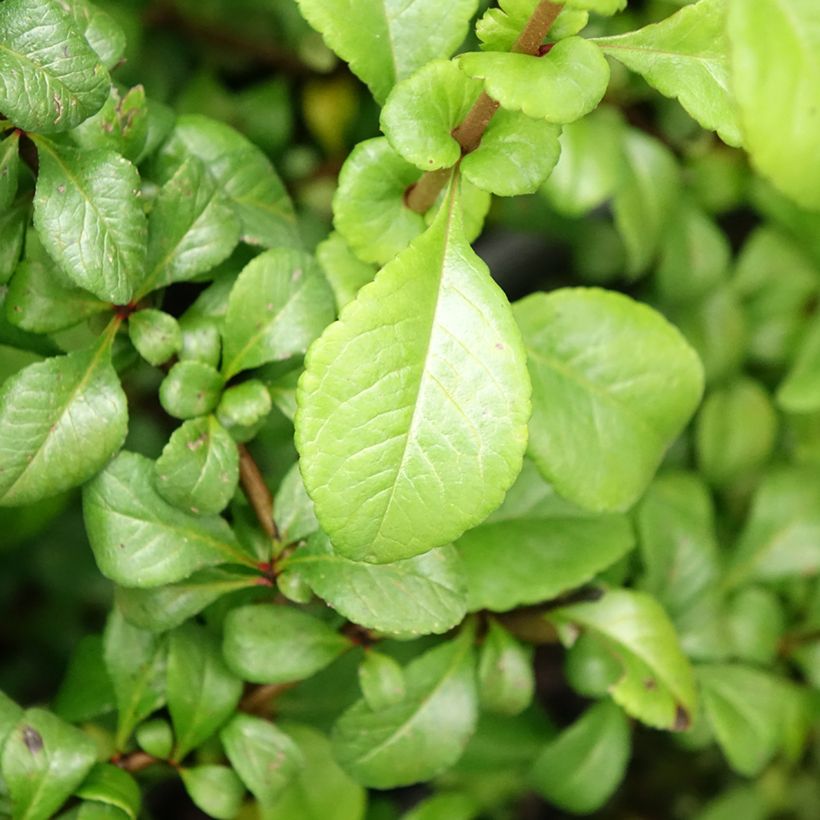

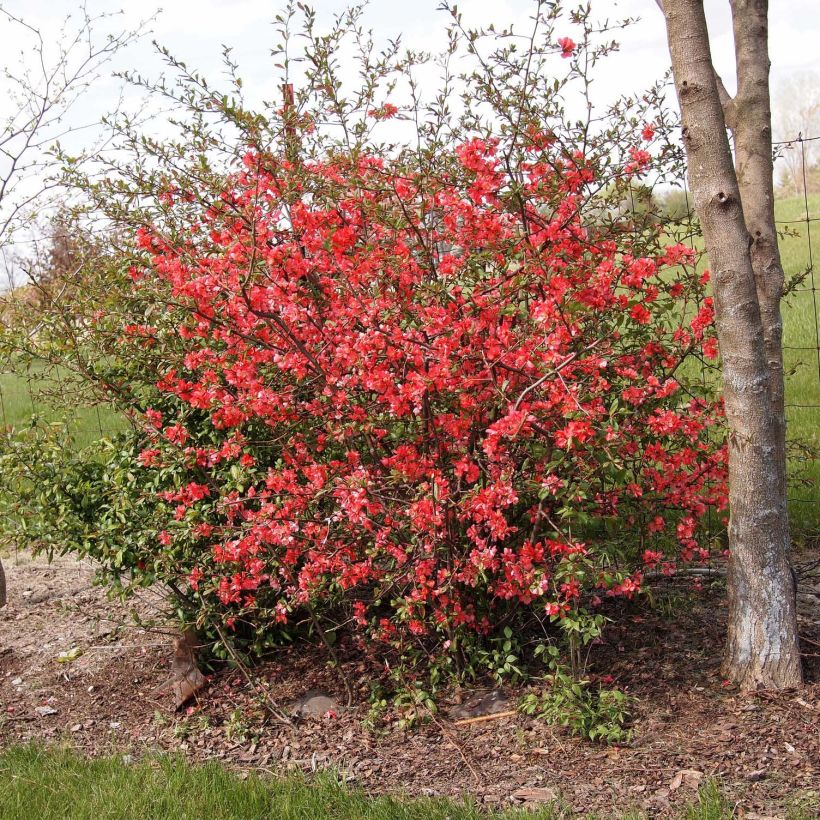

Plant habit
Flowering
Foliage
Botanical data
Chaenomeles
japonica
Sargentii
Rosaceae
Japanese quince
Cultivar or hybrid
Other Chaenomeles - Quince tree
View all →Planting and care
'Sargentii' is an easy plant to grow. It thrives in the sun or partial shade. You can grow it in the shade, but it will flower a little less. Plant it in ordinary, moist but well-drained soil, even though it tolerates drought well after 3 years of cultivation. It can even grow in limestone soil. When planting, mix your soil with compost. When grown as a hedge, space the plants 1m (3ft) apart. In a flower bed, the plants should be spaced 60 to 80cm (24 to 32in) apart. This Japanese quince is resistant to pollution. It requires little maintenance, except for occasional pruning of the longest branches in spring, as they sometimes become less floriferous.
Planting period
Intended location
Care
Planting & care advice
-
, onOrder confirmed
Reply from on Promesse de fleurs
Similar products
Haven't found what you were looking for?
Hardiness is the lowest winter temperature a plant can endure without suffering serious damage or even dying. However, hardiness is affected by location (a sheltered area, such as a patio), protection (winter cover) and soil type (hardiness is improved by well-drained soil).

Photo Sharing Terms & Conditions
In order to encourage gardeners to interact and share their experiences, Promesse de fleurs offers various media enabling content to be uploaded onto its Site - in particular via the ‘Photo sharing’ module.
The User agrees to refrain from:
- Posting any content that is illegal, prejudicial, insulting, racist, inciteful to hatred, revisionist, contrary to public decency, that infringes on privacy or on the privacy rights of third parties, in particular the publicity rights of persons and goods, intellectual property rights, or the right to privacy.
- Submitting content on behalf of a third party;
- Impersonate the identity of a third party and/or publish any personal information about a third party;
In general, the User undertakes to refrain from any unethical behaviour.
All Content (in particular text, comments, files, images, photos, videos, creative works, etc.), which may be subject to property or intellectual property rights, image or other private rights, shall remain the property of the User, subject to the limited rights granted by the terms of the licence granted by Promesse de fleurs as stated below. Users are at liberty to publish or not to publish such Content on the Site, notably via the ‘Photo Sharing’ facility, and accept that this Content shall be made public and freely accessible, notably on the Internet.
Users further acknowledge, undertake to have ,and guarantee that they hold all necessary rights and permissions to publish such material on the Site, in particular with regard to the legislation in force pertaining to any privacy, property, intellectual property, image, or contractual rights, or rights of any other nature. By publishing such Content on the Site, Users acknowledge accepting full liability as publishers of the Content within the meaning of the law, and grant Promesse de fleurs, free of charge, an inclusive, worldwide licence for the said Content for the entire duration of its publication, including all reproduction, representation, up/downloading, displaying, performing, transmission, and storage rights.
Users also grant permission for their name to be linked to the Content and accept that this link may not always be made available.
By engaging in posting material, Users consent to their Content becoming automatically accessible on the Internet, in particular on other sites and/or blogs and/or web pages of the Promesse de fleurs site, including in particular social pages and the Promesse de fleurs catalogue.
Users may secure the removal of entrusted content free of charge by issuing a simple request via our contact form.
The flowering period indicated on our website applies to countries and regions located in USDA zone 8 (France, the United Kingdom, Ireland, the Netherlands, etc.)
It will vary according to where you live:
- In zones 9 to 10 (Italy, Spain, Greece, etc.), flowering will occur about 2 to 4 weeks earlier.
- In zones 6 to 7 (Germany, Poland, Slovenia, and lower mountainous regions), flowering will be delayed by 2 to 3 weeks.
- In zone 5 (Central Europe, Scandinavia), blooming will be delayed by 3 to 5 weeks.
In temperate climates, pruning of spring-flowering shrubs (forsythia, spireas, etc.) should be done just after flowering.
Pruning of summer-flowering shrubs (Indian Lilac, Perovskia, etc.) can be done in winter or spring.
In cold regions as well as with frost-sensitive plants, avoid pruning too early when severe frosts may still occur.
The planting period indicated on our website applies to countries and regions located in USDA zone 8 (France, United Kingdom, Ireland, Netherlands).
It will vary according to where you live:
- In Mediterranean zones (Marseille, Madrid, Milan, etc.), autumn and winter are the best planting periods.
- In continental zones (Strasbourg, Munich, Vienna, etc.), delay planting by 2 to 3 weeks in spring and bring it forward by 2 to 4 weeks in autumn.
- In mountainous regions (the Alps, Pyrenees, Carpathians, etc.), it is best to plant in late spring (May-June) or late summer (August-September).
The harvesting period indicated on our website applies to countries and regions in USDA zone 8 (France, England, Ireland, the Netherlands).
In colder areas (Scandinavia, Poland, Austria...) fruit and vegetable harvests are likely to be delayed by 3-4 weeks.
In warmer areas (Italy, Spain, Greece, etc.), harvesting will probably take place earlier, depending on weather conditions.
The sowing periods indicated on our website apply to countries and regions within USDA Zone 8 (France, UK, Ireland, Netherlands).
In colder areas (Scandinavia, Poland, Austria...), delay any outdoor sowing by 3-4 weeks, or sow under glass.
In warmer climes (Italy, Spain, Greece, etc.), bring outdoor sowing forward by a few weeks.






























